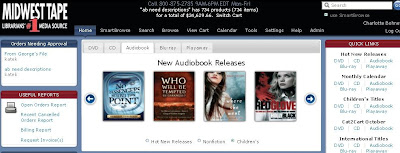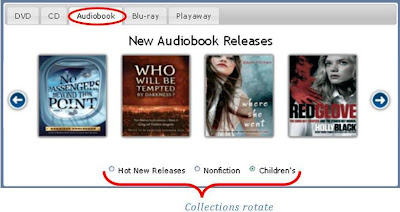A few months ago, Midwest Tape posted a blog discussing
3D: the Future of Entertainment. Since then 3D movies have bombarded the big screen, some even becoming summer blockbusters. But despite big screen popularity, Hollywood industry leaders and consumers alike seem to be forming a resistance toward the emerging 3D entertainment trend.
Hit or Miss
So far, six of this year’s top ten films hit theaters in 3D and altogether more than 20 3D films will release by the end of the year. But while some 3D films like
Avatar($749M),
Toy Story 3 ($404M),
Shrek Forever After ($238M), and
Alice in Wonderland ($334M) dominated the box office this summer, others fell short. Films converted to 3D at the last minute like
Clash of the Titans ($163M),
Step Up 3D ($42M), and
Piranha 3D ($18M) drew less than favorable crowds that ended up leaving theaters disappointed.
According to the president of Hollywood.com Box Office, Paul Dergarabedian, “As revenues from 3D films rise, there is a great temptation to see the technology as the salvation of the industry.”
1 In the next two years, producers will release nearly 60 3D films. But industry experts argue that just because it is possible to make a film in 3D, doesn’t mean it should be done every time. According to film critic Roger Ebert, “The 3D in Clash of the Titans was hastily added in postproduction to ride on the coattails of Avatar.”
2 DreamWorks Animation CEO Jeffrey Katzenberg agreed, associating the term “cheeseball” with the film.
2
Rereleasing classics in 3D
Due to the growing popularity of 3D films, popular classics like Titanic and Beauty and the Beast are being remastered into the 3D format. To do this, two offset images need to be created from one flat picture. Graphic artists may separate a shot of a man standing in front of a wall into three layers: the man, the wall, and the sky. They then turn the image into a topographical map by drawing depth lines around all of the objects on each of the individual layers. Next, computer software creates new, offset images of the individual objects by moving the contour maps to the left or right and smoothing everything out. Once completed, this time-consuming process must be repeated for every object of every shot of a movie. (
Read more about 2D to 3D conversion here.)
However, during the conversion process, artists and software have a lot of blanks to fill in, leaving some 3D scenes looking awkward.
3 For optimal quality, 3D movies, like Avatar, are normally filmed using two slightly offset cameras.
3 According to James Cameron, Avatar producer, postproduction of 3D films is counterproductive to the cause.
4
TV
Consumers will need 3D-ready televisions to watch 3D films once released on Blu-ray. However, according to a new report, "
Focusing on the 3DTV Experience,” released by the Nielsen Company in cooperation with the Cable & Telecommunications Association for Marketing, buyers remain reluctant to buy 3D televisions for three main reasons.
5
- Cost
According to Amazon.com, depending on brand and screen size, 3D televisions can cost anywhere from just over $1,000 to over $3,000. In 2010, only 5% of flat-panel TV sales were 3D televisions. Over time though, these sets are predicted to gain popularity. DisplaySearch foresees that 3D televisions will account for 37% of sales in 2014.6
- Availability of programming
Currently, there is a limited number of television channels broadcasting in 3D, with ESPN 3D being the most popular. Other cable networks like HDNet have begun developing 3D content and there are reports HBO will launch a 3D on-demand channel as early as spring 2011.5
Additionally, many movie studios are only selling their 3D discs to certain television brands making it hard to find compatible 3D content. For example, the December release of the 3D Blu-ray version of Avatar will initially only be sold as a pack-in for buyers of Panasonic 3D television sets.6
- Skepticism of glasses
Out of the study’s 425 participants, 89% complained that the glasses made it harder to do other things while watching television.5 Another downfall is that the glasses are not compatible with different brands of televisions.6 For example, Sony brand glasses will not work on Samsung televisions and buying extra glasses can cost upwards of $150.
The Future of 3D
Despite uncertainties, 3D is here to stay. In a recent article, “
Why 3D Movies are Falling Flat this Summer,” David Wertheimer, executive director of the Entertainment Technology Center at The University of Southern California said the dip in enthusiasm for 3D is to be expected, noting that it’s going to take longer than some people might like to perfect the emerging trend.
7
Do you still think 3D media is the future of entertainment? If it sticks around, is 3D media valuable to libraries? Share your thoughts below.
1 http://www.csmonitor.com/USA/Society/2010/0506/Why-Iron-Man-2-ignores-Hollywood-3D-mania
2 http://www.newsweek.com/2010/04/30/why-i-hate-3-d-and-you-should-too.html
3 http://www.slate.com/id/2243118/?from=rss
4 http://www.slashfilm.com/2008/12/02/james-cameron-criticizes-tim-burton-and-3d-dvd-releases/
5http://blog.nielsen.com/nielsenwire/consumer/u-s-consumers-show-high-interest-in-3dtv-but-cite-some-concerns/?utm_source=feedburner&utm_medium=feed&utm_campaign=Feed:+NielsenWire+%28Nielsen+Wire%29
6 http://www.dallasnews.com/sharedcontent/dws/bus/stories/DN-3Dtv_26bus.ART.State.Edition1.248d239.html
7 http://www.csmonitor.com/USA/Society/2010/0803/Why-3D-movies-are-falling-flat-this-summer







